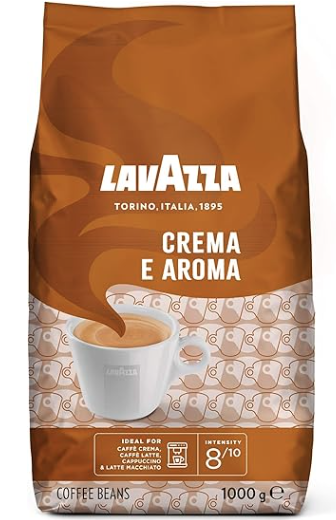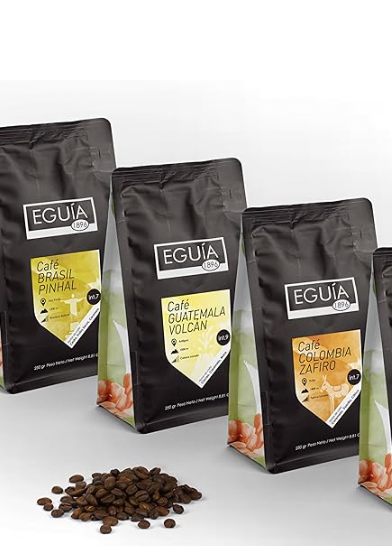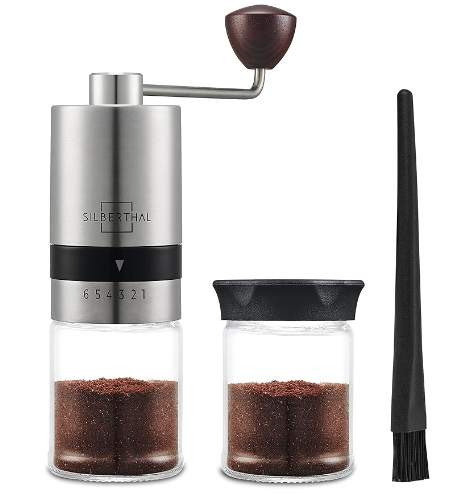Choose quality beans
Coffee beans are the seeds of coffee plants, typically roasted and ground to make coffee. They come in various types, each offering unique flavors and aromas. From the bold and robust to the smooth and mellow, coffee beans provide a much-needed caffeine boost and a sensory experience.
Buying whole coffee beans offers several advantages over ground coffee:
- Fresher Flavor: Whole beans retain their flavor and aroma longer than pre-ground coffee.
- Custom Grind: You can grind beans to your preferred coarseness for optimal brewing.
- Wider Variety: Whole beans offer a wider range of flavors, roasts, and origins.
- Enhanced Brewing Experience: Grinding your own beans adds a personal touch to the coffee-making process.
4 Different coffee bean types
Arabica Coffee Beans (Coffea arabica)

Lavazza creama and aroma

Colombia coffee beans

Tasting Pack 4 x 250 g – Arabica coffee beans
Arabica beans are characterized by their complex flavor profiles, often featuring notes of fruit, chocolate, and nuts. They offer a smoother, more refined taste compared to Robusta beans. Those who’ve tried this variety, either love it or hate it, but usually the coffee drinkers like the nutty, woodie flavour.
Ideal Brewing Methods:
- Pour Over: This method highlights the delicate flavors of Arabica beans.
- Drip Coffee: A classic brewing method that produces a balanced cup of coffee.
- Espresso: The intense heat and pressure of espresso extraction bring out the rich flavors of Arabica beans.
- AeroPress: A versatile brewing method that allows for a wide range of flavor profiles.
The Best of Arabica:
- Yirgacheffe: Known for its floral and fruity notes, Yirgacheffe is often considered one of the finest coffees in the world.
- Costa Rica: Costa Rican coffees offer a balanced flavor profile with notes of chocolate and nuts.
- Colombia: Colombian coffees are known for their smooth, medium-bodied flavor and hint of acidity.
- Kenya: Kenyan coffees are characterized by their bright acidity and fruity notes.
By understanding the unique qualities of Arabica coffee beans, you can elevate your coffee experience and savor the rich flavors and aromas that this exceptional bean has to offer.
Robusta Coffee Beans (Coffea caniphora)
Robusta coffee beans, while less celebrated than Arabica, offer a distinct flavor profile and unique benefits. They are primarily grown in Southeast Asia and Africa, where they thrive in lower altitudes and warmer climates.
Taste Profile:
Robusta beans are known for their higher caffeine content and stronger, bolder flavor. They often have a bitter and earthy taste, with hints of spice and smoke.
Ideal Brewing Methods:
- Espresso: The intense flavor of Robusta beans is well-suited for espresso-based drinks like lattes and cappuccinos.
- Cold Brew: A longer brewing time allows for a smoother, less bitter cup of coffee.
Key Characteristics:
- Higher Caffeine Content: Robusta beans contain nearly double the caffeine of Arabica beans, making them a popular choice for those seeking a strong energy boost.
- Lower Acidity: Robusta beans tend to have lower acidity levels, which can be appealing to those who prefer a less acidic cup of coffee.
- Hardier Plant: Robusta coffee plants are more resistant to pests and diseases, making them easier to cultivate.
While Arabica beans are often favored for their nuanced flavors, Robusta beans offer a distinct and invigorating experience. Whether you prefer a smooth and delicate cup or a bold and intense brew, both Arabica and Robusta beans have a place in the world of coffee.
Liberica Coffee Beans (Coffea liberica)
Liberica coffee beans, a lesser-known but fascinating variety, offer a distinct and robust flavor profile. Native to the Philippines, these large beans have a unique taste that sets them apart from the more common Arabica and Robusta beans.
Taste Profile:
Liberica coffee beans are known for their full-bodied, smoky, and slightly nutty flavor. They often have a lower acidity than Arabica beans, making them a good choice for those who prefer a less acidic cup. Some varieties also exhibit fruity notes, adding complexity to their taste profile.
Ideal Brewing Methods:
Due to their robust flavor, Liberica beans are well-suited for various brewing methods, including:
- Espresso: The bold flavor and low acidity of Liberica beans make them a good choice for espresso-based drinks.
- Pour Over: This method can highlight the unique flavor notes of Liberica beans.
- French Press: The full-bodied nature of Liberica beans is well-suited for the French press brewing method.
While Liberica coffee beans may not be as widely available as Arabica and Robusta, they offer a distinctive and rewarding coffee experience for those who appreciate bold, complex flavors.
Excelsa Coffee Beans (Coffea excelsa)
The Excelsa coffee beans, a lesser-known variety, it offers a distinct and intriguing flavor profile. Native to the Philippines in Asia. Regarding the taste these large beans produce a unique cup with a smoky, woody, and slightly nutty taste.
Key characteristics of Excelsa coffee beans:
- Unique Flavor Profile: Excelsa beans offer a bold and full-bodied taste, often described as smoky, woody, and slightly nutty. Some varieties also exhibit fruity notes.
- Low Acidity: Unlike Arabica, Excelsa beans tend to have lower acidity, making them a good choice for those who prefer a less acidic cup of coffee.
- Disease Resistance: Excelsa plants are more resistant to diseases and pests, making them a resilient crop.
- Lower Caffeine Content: While still caffeinated, Excelsa beans generally have lower caffeine content than Robusta beans.
Despite their unique qualities, Excelsa coffee beans are relatively rare and often overshadowed by Arabica and Robusta. However, they offer a distinct and rewarding coffee experience for those who appreciate bold, complex flavors.
Coffee bean grinder
Why do we grind coffee? What happens when we grind coffee? When we have coffee beans thats one thing, but to the whole cofee bean the water cannot get all of the flavour. With grind we smash the beans into tiny little pieces and this way the water can dissolve the flavour out of the coffee. The freshness is a very key aspect of grinding a coffee. There are three ways how a coffee can go stale:
- Volatilely float off into the atmosphere: The flavour and aromas wander off.
- Oxidation: fats and oils oxidize and go rancid.
- Staling reaction
To avoid all these things, is to keep the coffee beans whole and smash them to pieces only when you want to immediataly brew it. Types of coffee grinder:
- Blade grinder: it has a little motor attached to spinning blades. The longer you run it the finer the coffee will be. It smashing the coffee beans instead of cutting them, and it results not same ground size and it can add to your coffee bitterness and dullness. Better to spice grounding.
- Burr grinders: there are two cutting discs inside, one spins against the other one and controlling the distance between two controls how bit the pieces are when they get out from the grinder.

Manual coffee grinder

Electric coffee grinder

Electric coffee grinderw 17 grind settings


